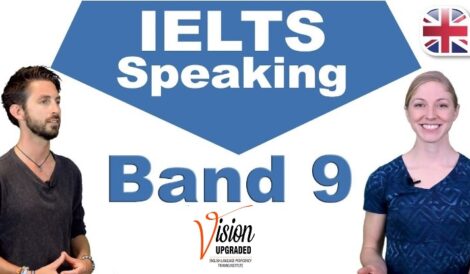Discover which one of them is more suitable to study abroad and for immigration purposes: IELTS and PTE
In today’s globalised world, having good English skills can open doors to many opportunities such as studying, working, or moving to another country. Tests like IELTS or PTE are popular for showing how well you can speak, read, write, and understand English. Many people in Punjab dream of going abroad for a better life and higher wages. To make this dream a reality, they often need to take English tests like IELTS or PTE. That’s why the top 10 IELTS institutes in Punjab are available to help them prepare.
In this blog, we’ll compare IELTS and PTE. We’ll discuss how each test is organized, how they are scored, and other important details. This information will help you choose the best test for your goals and prepare effectively. Whether you’re aiming for admission to foreign universities, seeking employment opportunities, or planning to relocate, understanding the differences between IELTS and PTE is crucial. These tests play a significant role in determining your eligibility for various opportunities abroad. By familiarising yourself with their formats and requirements, you can increase your chances of success. So, let’s delve into the world of IELTS and PTE and discover how they can shape your future.
Comparison between IELTS and PTE test:
In today’s globalized world, proficiency in the English language serves as a gateway to numerous opportunities, spanning education, career advancement, and immigration prospects in English-speaking countries. For individuals originating from regions where English is not the primary language, demonstrating competency in English is often a prerequisite for pursuing advanced studies or securing employment opportunities abroad. Tests such as the International English Language Testing System (IELTS) and the Pearson Test of English (PTE) stand as prominent assessments for gauging proficiency in English language skills, including speaking, reading, writing, and listening.
The majority of people in Punjab, like many other regions across the globe, harbour aspirations of migrating abroad for improved living standards and enhanced earning potential. To realize these aspirations, individuals often find themselves needing to undertake English proficiency tests such as IELTS or PTE. This necessity has led to the establishment of numerous IELTS institutes in Punjab, aiming to assist individuals in preparing for these tests and ultimately achieving their goals.
In this comprehensive comparison between IELTS and PTE, we aim to elucidate the key distinctions between these two tests, offering insights into their structure, scoring mechanisms, test formats, and other essential details. By understanding these differences, individuals can make informed decisions regarding which test aligns best with their objectives and how to effectively prepare for it. Whether the purpose is seeking admission to foreign educational institutions, pursuing career opportunities abroad, or relocating to another country, discerning the disparities between IELTS and PTE is paramount in making strategic choices for one’s future endeavours.
1. Difficulty Level:
Both IELTS and PTE present unique challenges, with neither being inherently easier than the other. While IELTS allows candidates to complete the test using pen and paper, PTE requires candidates to undertake the assessment on a computer. IELTS comprises larger tasks, whereas PTE incorporates 20 shorter tasks. However, it’s imperative not to be swayed solely by the number of tasks, as both tests necessitate a comprehensive understanding of the format and fundamental English language skills to succeed.
2. Test Frequency:
The availability of test dates varies between IELTS and PTE. The IELTS General Training Test is accessible on 24 fixed dates annually, while the IELTS Academic test is scheduled for 48 days per year or up to four times per month, contingent on local demand. IELTS test facilities are widespread, with centres situated in 140 countries worldwide. In contrast, PTE tests are administered throughout the year in 50 countries, subject to the availability of test centres in the candidate’s preferred region.
3. Validity and Results Duration:
IELTS results typically become available within 13 days and remain accessible online for 28 days. Regardless of whether candidates undertake the General or Academic test, IELTS scores remain valid for two years. While there is no restriction on the number of test attempts, it’s advisable to allow for a few months’ gap between tests to facilitate optimal preparation and enhance outcomes.
PTE results, facilitated by the computerized process, are typically published within five working days. Similarly to IELTS, PTE results retain validity for a period of two years. Post this duration, candidates’ PTE scores are no longer accessible on the official PTE website. Notably, both IELTS and PTE scores hold validity for three years in the context of Australian migration.
4. Test Pattern of both tests:
The structure of the IELTS and PTE tests varies significantly. IELTS evaluates each language skill independently, comprising distinct segments: Listening, Reading, Writing, and Speaking. The Speaking task may be conducted on the same day as the other sections or on a separate day. Conversely, PTE integrates various tasks that assess English communication skills comprehensively. These tasks include Listening-Writing, Speaking-Listening-Writing, Reading-Writing, and Writing-Reading. For instance, the Speaking Read Aloud section evaluates both speaking and reading skills.
5. Scoring Pattern:
The scoring systems of IELTS and PTE differ in terms of scale and range. IELTS scores range from 0 to 9 band scores, with 9 representing the highest achievable score. Educational institutions, governmental bodies, and corporate entities typically set the minimum clearance threshold within the range of 6.0 to 7.5. Conversely, PTE scores range from 10 to 90 points, with a maximum attainable score of 90 points. Many employers and educational establishments establish a minimum eligibility score in the range of 65 to 73.
6. Evaluation Places:
In addition to evaluating the four primary communicative skills assessed in both examinations, PTE includes an assessment of six enabling skills: Pronunciation, Grammar, Vocabulary, Oral Fluency, Written Discourse, and Spelling. Consequently, the PTE Academic test provides separate scores for overall communicative skills and enabling skills in its report. In contrast, candidates receive band scores for individual skills as well as an overall band score in the case of IELTS.
7. The Timing parameter:
The allocated time for each section of the tests varies between IELTS and PTE. As previously mentioned, the parts of the IELTS test are assigned specific timeframes, with the exception of the speaking test, which typically spans approximately 11 to 15 minutes. Conversely, the PTE test duration ranges from approximately 2.5 to 3.5 hours. Candidates must manage their time effectively to complete each section within the stipulated timeframe.
8. Both tests fees:
The examination fees for both IELTS and PTE tests vary based on the geographical location of the test centre. For example, in India, the cost for the PTE test is approximately 15,900 INR, while IELTS would amount to around 16,250 INR. Candidates should consider the financial aspect when planning their test preparation and registration.
Understanding these key distinctions between IELTS and PTE is essential for individuals seeking to demonstrate their English proficiency and pursue opportunities abroad. By conducting thorough research and assessing their own strengths and preferences, candidates can make informed decisions regarding test selection and preparation strategies. Additionally, seeking guidance from reputable institutes such as the Top 10 IELTS Institute in Punjab can further enhance candidates’ readiness and confidence in facing these assessments.
Final Words:
Both IELTS and PTE are important tests for proving your English skills if you want to study, work, or move to an English-speaking country. They have different formats, scoring systems, and test frequencies, so it’s important to understand these differences to choose the best test for your needs. In Punjab, many people aim to go abroad for better opportunities, and the top 10 IELTS Institutes in Punjab can help them prepare effectively. By getting help from these institutes and understanding the key differences between IELTS and PTE, you can increase your chances of achieving your goals and succeeding in your future endeavors.




